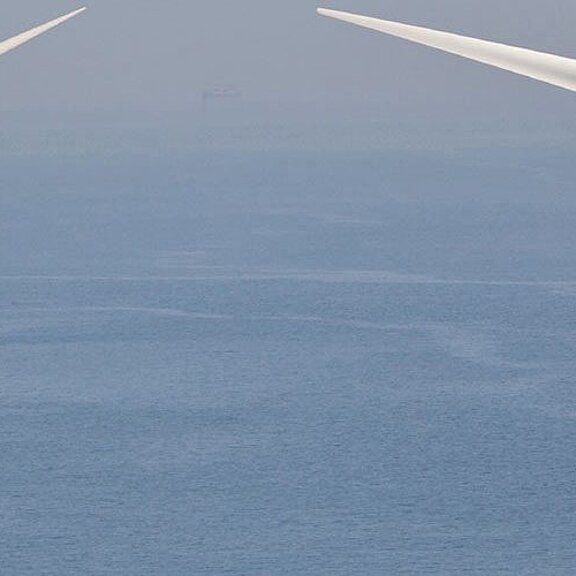

When it comes to high availability and reliability of wind energy systems, the plant operator has just one objective - to avoid any unexpected downtime or problems with everyday operation. For an unearthed asynchronous generator with squirrel cage rotor, a blind performance compensation device is installed in parallel to the generator. For modern systems, the generator speed is disconnected from the network frequency by means of an alternating current inverter. Electrical safety plays a decisive role. An undetected isolation fault is just as significant as unexpected system downtime or can increase the fire risk. At the same time, unplanned service interventions can be expensive and time-consuming.
The energy that the wind energy system requires for operation is fed in as control voltage from outside and must be monitored for electrical safety. After all, an undetected electrical fault is as significant as unexpected system downtime and also significantly increases the fire risk. At the same, unplanned service interventions can be expensive and time-consuming. Wind energy plant insurers also demand effective condition monitoring systems. The Bender Condition Monitoring System gives you a clear overview of all the relevant data for your system.
Before internal generation systems (photovoltaics, water power, CHP, biogas, etc.) can feed electrical energy into the public grid, an automatic switching point must be installed between the generation system and the low voltage network. This checks whether the frequency and voltage fed in are within the specified range. The VMD three-phase voltage monitoring relay is used to pre-configure numerous standard specifications at the touch of a button.
The decentralised wind energy systems (WES) are monitored centrally by a control centre. The necessary data and information is provided by Bender gateways and condition monitoring systems. Using a gateway or condition monitor from the COMTRAXX® range, the insulation resistance or any residual current occurring is reported to the higher level monitoring systems or a control centre.
| Name | Category | Size | Language | Timestamp | D-/B-Number |
|---|---|---|---|---|---|
| Product Overview ISOMETER®/ISOSCAN® | Product Overviews | 5.3 MB | EN | 2024/02/1616.02.2024 | |
| Product Overview - Residual Current Monitoring | Product Overviews | 4.2 MB | EN | 2025/12/1616.12.2025 | |
| Renewable Energies | Market Segment Brochures | 3.6 MB | EN | 2025/04/0303.04.2025 | |
| Insulation Fault Location - Planning and Setup | Technical article | 112.4 KB | EN | 2019/05/1313.05.2019 | |
| Safe Connection to the Grid VMD460-NA | Flyer | 222.0 KB | EN | 2019/05/1313.05.2019 | D00001 |
| Answers for Tomorrow | Technical article | 764.8 KB | EN | 2019/05/1313.05.2019 | |
| Electrical Safety in Control and Auxiliary Circuits | Technical article | 632.6 KB | EN | 2023/04/2121.04.2023 | |
| Fire safety in wind power stations | Technical article | 20.0 B | EN | 2023/05/1515.05.2023 |
Products
![[Translate to English:] COMTRAXX® COM465IP](/fileadmin/_processed_/f/d/csm_COM465IP_01_WEB_296d1e7f5c.jpg)
Condition Monitor with an integrated gateway for the connection of Bender devices to Ethernet-TCP/IP networks
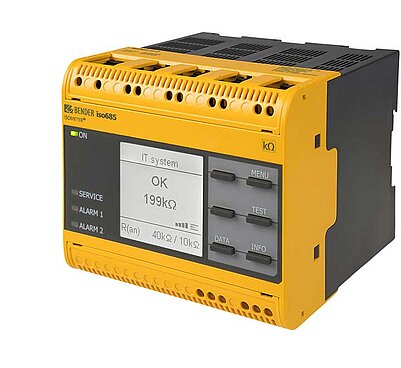
Insulation monitoring device for inverter applications and large industrial plants
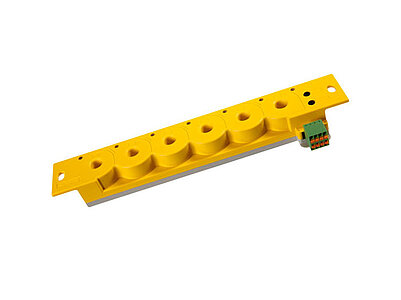
Insulation fault locator with 6 integrated measuring current transformers for localisation of insulation faults in main circuits

Insulation fault locator with 6 integrated measuring current transformers for localisation of insulation faults in control circuits
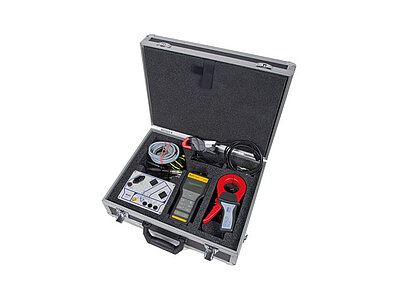
Portable insulation fault location systems for unearthed and earthed systems (IT and TN systems)
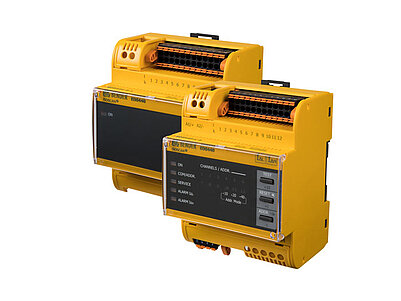
Insulation fault locator for localisation of insulation faults in main circuits

Insulation fault locator for localisation of insulation faults in control circuits
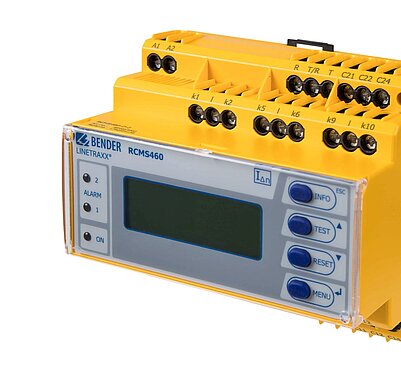
Multichannel AC, pulsed DC and AC/DC sensitive residual current monitor
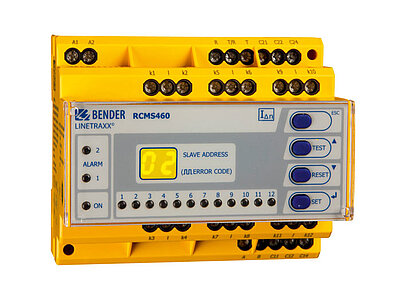
Multichannel AC, pulsed DC and AC/DC sensitive residual current monitor
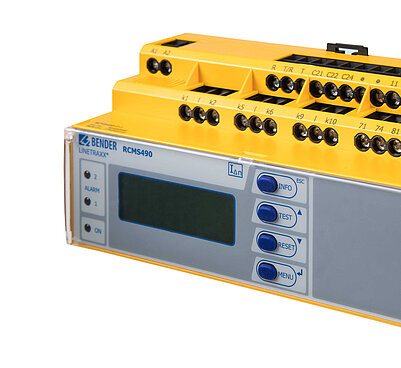
Multichannel AC, pulsed DC and AC/DC sensitive residual current monitor with one alarm contact per channel
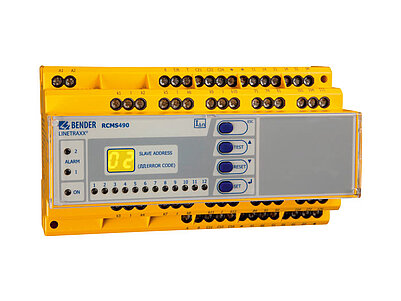
Multichannel AC, pulsed DC and AC/DC sensitive residual current monitor with one alarm contact per channel
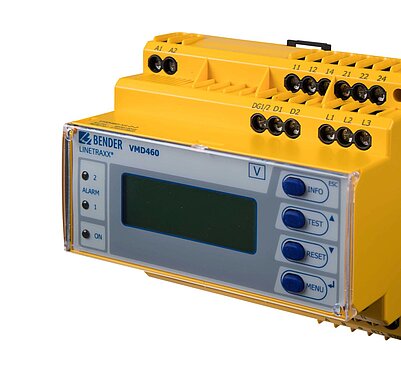
Network and system protection (NS protection) for monitoring the power infeed of power generation systems
![[Translate to English:] COMTRAXX® COM465IP](/fileadmin/_processed_/f/d/csm_COM465IP_01_WEB_296d1e7f5c.jpg)
Condition Monitor with an integrated gateway for the connection of Bender devices to Ethernet-TCP/IP networks

Insulation monitoring device for inverter applications and large industrial plants

Insulation fault locator with 6 integrated measuring current transformers for localisation of insulation faults in main circuits

Insulation fault locator with 6 integrated measuring current transformers for localisation of insulation faults in control circuits

Portable insulation fault location systems for unearthed and earthed systems (IT and TN systems)

Insulation fault locator for localisation of insulation faults in main circuits

Insulation fault locator for localisation of insulation faults in control circuits

Multichannel AC, pulsed DC and AC/DC sensitive residual current monitor

Multichannel AC, pulsed DC and AC/DC sensitive residual current monitor

Multichannel AC, pulsed DC and AC/DC sensitive residual current monitor with one alarm contact per channel

Multichannel AC, pulsed DC and AC/DC sensitive residual current monitor with one alarm contact per channel

Network and system protection (NS protection) for monitoring the power infeed of power generation systems
Wind turbines - Part 2: Requirements for small wind turbines
Measuring relays and protection equipment - Part 127: Functional requirements for over/under voltage protection
Electronic equipment for use in power installations
Regola tecnica di riferimento per la connessione di Utenti attivi e passivi alle reti AT ed MT delle imprese distributrici di energia elettrica (Reference technical rules for the connection of active and passive consumers to the HV and MV electrical networks of distribution Company)
Anwendungsregel:2011-08 Erzeugungsanlagen am Niederspannungsnetz Technische Mindestanforderungen für Anschluss und Parallelbetrieb von Erzeugungsanlagen am Niederspannungsnetz
Selbsttätige Schaltstelle zwischen einer netzparallelen Eigenerzeugungsanlage und dem öffentlichen Niederspannungsnetz (Norm wurde zurückgezogen und durch DIN VDE V 0126-1-1 ersetzt)
Specifieke technische aansluitingsvoorschriften voor gedecentraliseerde productie-installaties die in parallel werken met het distributienet
Recommendations for the Connection of Generating Plant to the Distribution Systems of Licensed Distribution Network Operators
Recommendations for the Connection of Generating Plant to the Distribution Systems of Licensed Distribution Network Operators
Recommendations for the Connection of Type Tested Small-scale Embedded Generators (up to 16A per phase) in parallel with Low Voltage Distribution Systems
Recommendations for the Connection of Type Tested Small-scale Embedded Generators (up to 16A per phase) in parallel with Low Voltage Distribution Systems
